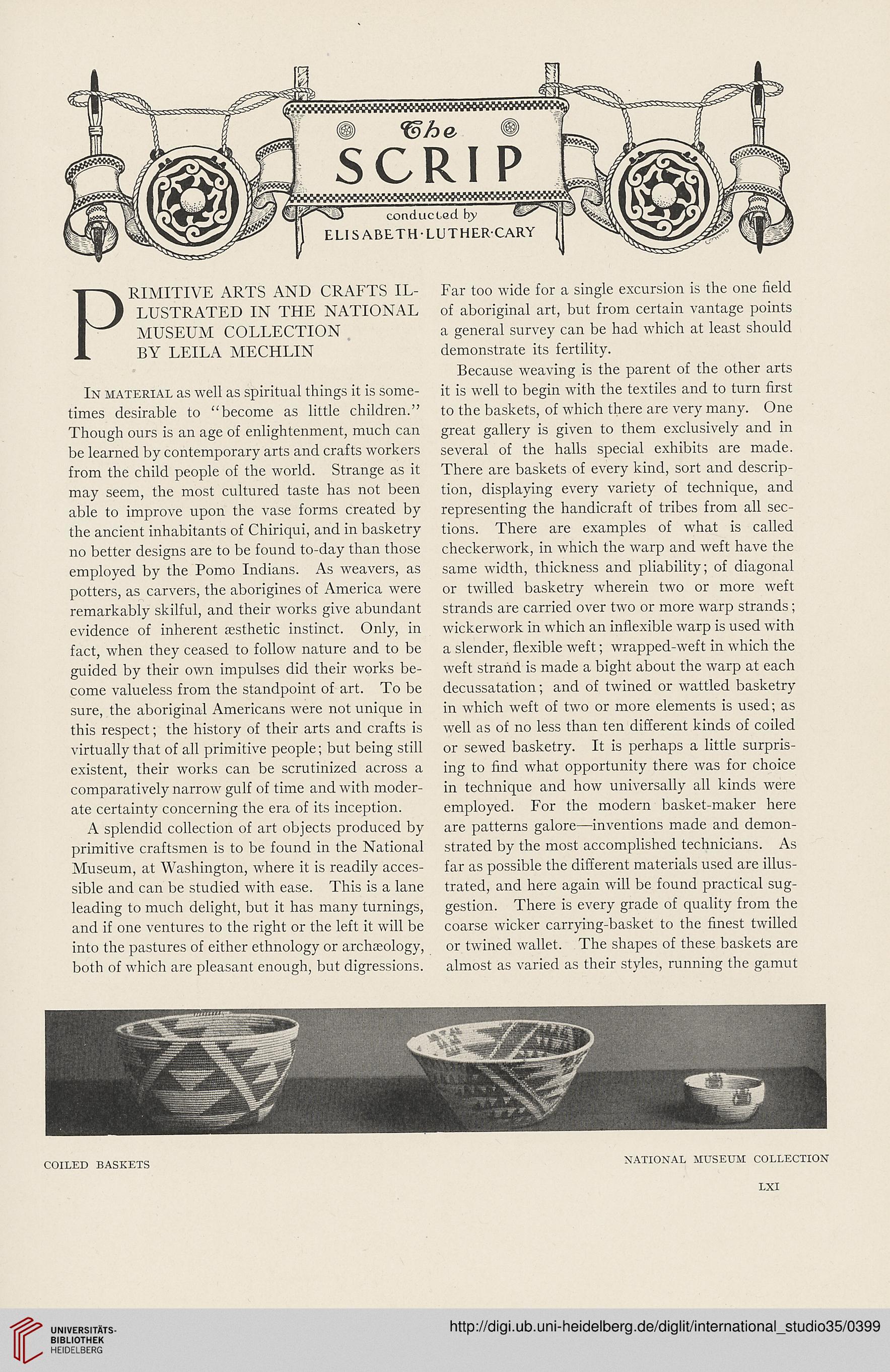PRIMITIVE ARTS AND CRAFTS IL-
LUSTRATED IN THE NATIONAL
MUSEUM COLLECTION
BY LEILA MECHLIN
In material as well as spiritual things it is some-
times desirable to “become as little children.”
Though ours is an age of enlightenment, much can
be learned by contemporary arts and crafts workers
from the child people of the world. Strange as it
may seem, the most cultured taste has not been
able to improve upon the vase forms created by
the ancient inhabitants of Chiriqui, and in basketry
no better designs are to be found to-day than those
employed by the Pomo Indians. As weavers, as
potters, as carvers, the aborigines of America were
remarkably skilful, and their works give abundant
evidence of inherent assthetic instinct. Only, in
fact, when they ceased to follow nature and to be
guided by their own impulses did their works be-
come valueless from the standpoint of art. To be
sure, the aboriginal Americans were not unique in
this respect; the history of their arts and crafts is
virtually that of all primitive people; but being still
existent, their works can be scrutinized across a
comparatively narrow gulf of time and with moder-
ate certainty concerning the era of its inception.
A splendid collection of art objects produced by
primitive craftsmen is to be found in the National
Museum, at Washington, where it is readily acces-
sible and can be studied with ease. This is a lane
leading to much delight, but it has many turnings,
and if one ventures to the right or the left it will be
into the pastures of either ethnology or archaiology,
both of which are pleasant enough, but digressions.
Far too wide for a single excursion is the one field
of aboriginal art, but from certain vantage points
a general survey can be had which at least should
demonstrate its fertility.
Because weaving is the parent of the other arts
it is well to begin with the textiles and to turn first
to the baskets, of which there are very many. One
great gallery is given to them exclusively and in
several of the halls special exhibits are made.
There are baskets of every kind, sort and descrip-
tion, displaying every variety of technique, and
representing the handicraft of tribes from all sec-
tions. There are examples of what is called
checkerwork, in which the warp and weft have the
same width, thickness and pliability; of diagonal
or twilled basketry wherein two or more weft
strands are carried over two or more warp strands;
wickerwork in which an inflexible warp is used with
a slender, flexible weft; wrapped-weft in which the
weft strand is made a bight about the warp at each
decussatation; and of twined or wattled basketry
in which weft of two or more elements is used; as
well as of no less than ten different kinds of coiled
or sewed basketry. It is perhaps a little surpris-
ing to find what opportunity there was for choice
in technique and how universally all kinds were
employed. For the modern basket-maker here
are patterns galore—inventions made and demon-
strated by the most accomplished technicians. As
far as possible the different materials used are illus-
trated, and here again will be found practical sug-
gestion. There is every grade of quality from the
coarse wicker carrying-basket to the finest twilled
or twined wallet. The shapes of these baskets are
almost as varied as their styles, running the gamut
COILED BASKETS
NATIONAL MUSEUM COLLECTION
LXI




